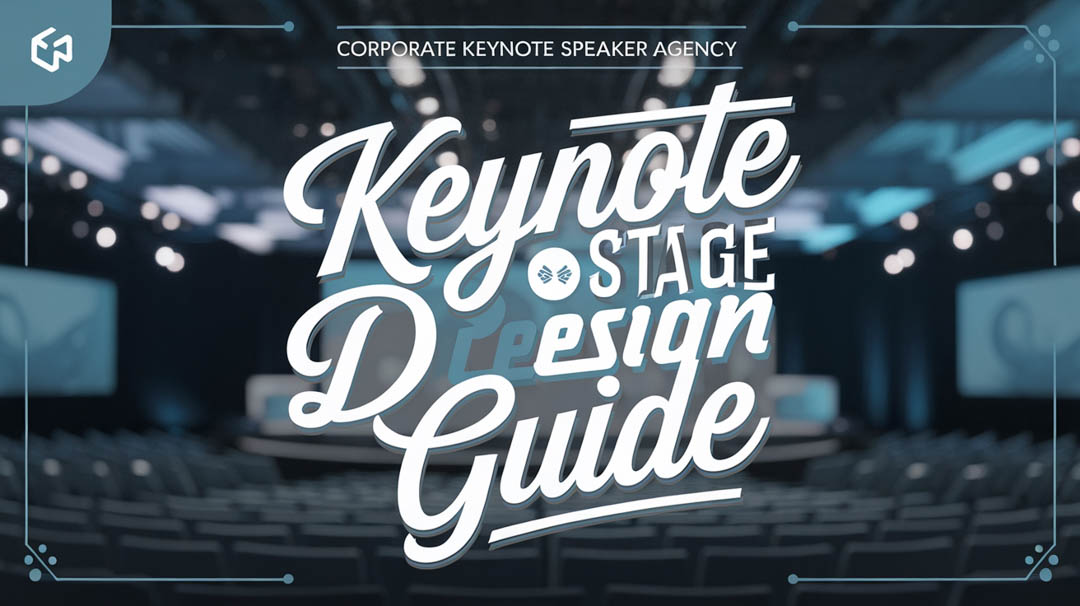When you’re planning a keynote presentation, the stage design can make or break your impact before you even say a word. You’ll need to ponder, reflect on, or contemplate more than just placing a podium and calling it done. Today’s audiences expect an immersive experience that combines thoughtful layout, strategic lighting, and innovative technology. While these elements might seem overwhelming at first, understanding the core principles of professional stage design will help you devise, formulate, or construct a presentation environment that captivates from start to finish.
Essential Elements of Professional Stage Layout
To create an impactful stage design, consider these key elements:
- Visual Elements: Incorporate visual elements that reinforce the speaker’s message and theme, guaranteeing consistency with event branding. As a Vegas-based specialist, Keelan Leyser understands the importance of creating visually striking presentations that captivate audiences.
- Aesthetic Balance: Establish aesthetic elements that create visual harmony and impact from every seat in the house.
- Venue Considerations: Decide on a layout that suits the venue’s size, shape, and location to maximize visibility, accessibility, and comfort for the speaker and audience.
- Effective planning begins with understanding the speaker’s style and preferences, ensuring the stage design aligns with their persona and presentation style.
Lighting and Visual Technology Considerations
Stage Design for Impactful Keynote Presentations
Lighting and Visual Technology Considerations
As you plan your keynote presentation, incorporating thoughtful lighting and visual technology considerations can considerably improve the overall impact of your event. Advanced lighting controls and virtual production techniques are now integral to creating immersive and engaging experiences. Mind-bending illusions can transform standard presentations into unforgettable technological showcases.
To leverage these trends effectively:
- Incorporate LED Technology: Use LEDs for their energy efficiency and flexibility in design.
- Integrate Virtual Production: Combine virtual environments, augmented reality, and advanced visual effects to enhance visual impact.
- Optimize Sustainability: Choose environmentally friendly lighting solutions and reduce light pollution by using LEDs properly.
LightFair 2025 will present a comprehensive showcase of sustainable lighting innovations, emphasizing the importance of biennial industry events in promoting environmental awareness and innovation in lighting design.
These considerations will make your keynote presentation visually compelling and sustainable.
Creating an Engaging Speaker-Audience Connection Through Design
To build a strong connection, you must personalize the subject matter. Connect to the audience’s here-and-now by referring to their experiences and mentioning your own. Highlight local angles, such as a familiar person, place, or event. Mindset disruptors like Jose Flores demonstrate how personal stories of struggle can create powerful audience connections.
To engage further:
- Incorporate interactive elements: Use videos, handouts, or virtual reactions to stimulate physical engagement and mental participation with questions, provocative statements, and smart analogies.
- Know and segment your audience: Understand their needs and interests to tailor your message and connect on a deeper level.
- Use effective introductions: Engage with a scene, a story, a personal experience, or a recent event to capture their attention immediately.
Moreover, it’s crucial to design a clear and impactful conclusion by summarizing and refocusing key takeaways, creating closure and a sense of finality.
Stage Layout and Design
When planning a keynote presentation, effective stage layout and design serve as essential foundations for speaker success. You’ll want to position your speaker’s podium slightly off-center, allowing natural movement across the stage while maintaining clear sight lines for all audience members.
Create depth by incorporating multiple levels or risers, and guarantee proper spacing between any furniture pieces. You’ll need at least 6-8 feet of clear walking space for your speaker to move comfortably.
Consider placing key visual elements, like screens or displays, at angles that complement the stage flow without creating visual barriers.
For corporate events, keep the design professional yet dynamic with clean lines and strategic lighting. Remember to include subtle branding elements that align with your company’s identity while avoiding cluttered or distracting stage arrangements. Working with event and speaker experts ensures your stage design optimally showcases both keynote presentations and entertainment segments.
Csa’s Global Speaker Network
CSA’s expansive global speaker network offers you access to over 1,000 professional presenters across diverse categories, from business leaders to celebrity personalities. You’ll find experts specializing in technology, healthcare, cybersecurity, and team building, along with entertaining speakers like magicians who combine showmanship with business insights.
Whether you’re planning a corporate conference, staff training, or product launch, CSA’s dual US/UK presence guarantees you’ll get a speaker who comprehends your audience’s cultural context. Their selection criteria focus on communication ability, subject expertise, and proven track records. You can also rely on CSA’s emergency speaker replacement service if unexpected changes arise.
With their cross-cultural expertise and international event capabilities, you’ll get a keynote presenter who delivers measurable impact for your specific event needs. The agency’s extensive roster includes inspirational keynote speakers who can transform your corporate events with powerful messages that resonate across industries.
Final thoughts
Your stage design choices will make or break your keynote presentation’s impact. Remember to balance visual elements, lighting, and technology while keeping audience engagement at the forefront. You’ll want to guarantee clear sightlines, comfortable seating, and strategic placement of screens or displays. Focus on creating an environment that supports your message and connects with your audience through thoughtful design and seamless integration of multimedia elements. Incorporating interactive elements, such as live polls or Q&A sessions, can further enhance the connection between the speaker and the audience. Additionally, consider utilizing soundscapes that align with your presentation’s theme, which can evoke emotions and underscore key points. By maximizing audience engagement techniques, you’ll ensure that your message resonates long after the curtain falls, leaving a lasting impression on your attendees.













